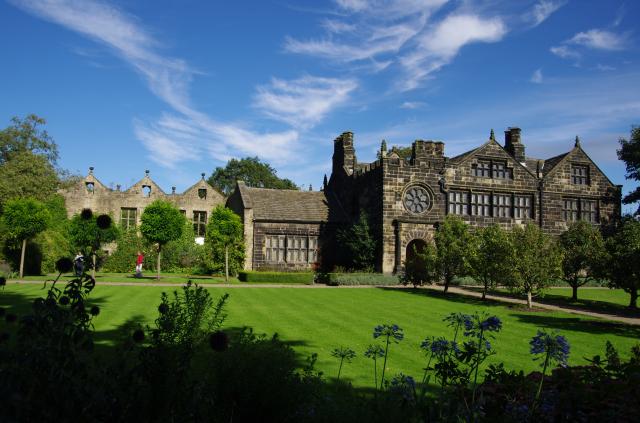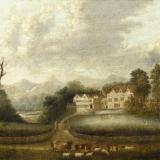Report on Visit to East Riddlesden Hall
Wednesday, 16th September 2015
The last trip of the year, and the last ever trip to be organised by Olwyn Hirst & Joan Dewson, was a great success. The skies cleared and the venue proved to be a very interesting house.
After our coach driver negotiated a number of tight bends and gateways we were presented with a vision of the Hall across the duck pond, very much as it appears in paintings from the nineteenth century. Before entering the Hall we examined the seventeenth century Great Barn, which measures 37 by 12 metres and is one of the finest in the country.
The house we see today is largely the work of James Murgatroyd who bought the manor in 1638. It is an odd mixture with Classical motifs, including columned porches and a plinth shaped in a Vitruvian wave, surmounted by gothic ones including rose windows and pinnacles. Murgatroyd introduced some elaborate plaster ceilings, but his renovations and extensions were cut short by the Civil War. In the later seventeenth century the house was inherited by the Starkie family. The wing they built fell into disrepair and was demolished, apart from one façade, in 1905.
In the nineteenth century the house was divided up and tenanted. After a long decline, when demolition was threatened, it was bought by brothers William and John Brigg and presented to the National Trust. The interiors are now furnished with seventeenth century pieces from the trust’s collection and chosen based on an inventory made during the Civil War.
http://www.nationaltrust.org.uk/east-riddlesden-hall/
East Riddlesden Hall, West Yorkshire
This 17th-century yeoman-clothier's home, with mullioned windows, decorative plasterwork and oak panelling, is complemented by solidly constructed, and typically Yorkshire, oak furniture, textiles and pewter of the period. It is set in an estate which was once buzzing with farming activity, but which now contains award-winning gardens. (read more...)


%20(678x1024).jpg) Olwyn Hirst, Digby Harris & Joan Dewson
Olwyn Hirst, Digby Harris & Joan Dewson

